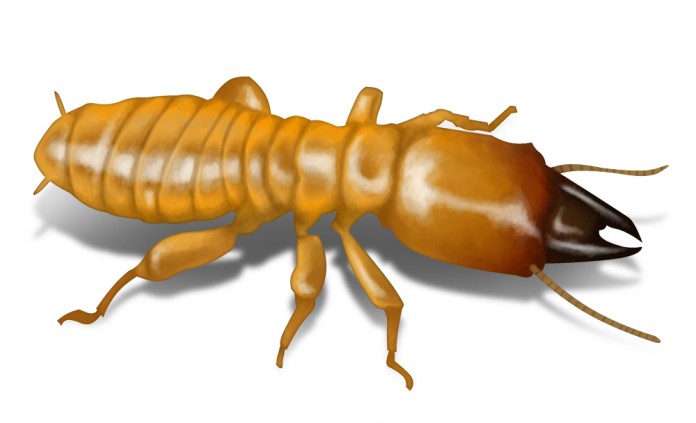Hybrid Termite Threatens Florida
 FORT LAUDERDALE, Fla., March 25 (UPI) — The hybrid pest is a product of Formosan subterranean termites (Coptotermes formosanus) and Asian subterranean termites (Coptotermes gestroi), both invasive species. A new study by researchers at the University of Florida suggests Asian males are mating with Formosan females, and may even prefer their new mates to females from their own species.
FORT LAUDERDALE, Fla., March 25 (UPI) — The hybrid pest is a product of Formosan subterranean termites (Coptotermes formosanus) and Asian subterranean termites (Coptotermes gestroi), both invasive species. A new study by researchers at the University of Florida suggests Asian males are mating with Formosan females, and may even prefer their new mates to females from their own species.
Interbreeding among species isn’t bad in and of itself, but the recent study suggests hybrid offspring at able to grow colonies at twice the pace of their parents. Some hybrids aren’t able to reproduce, but latest research proves that’s not a problem for the Formosan-Asian termite.
Together, the Formosan and Asian species account for $40 billion in damages worldwide. The number could grow if the new hybrid species finds its way out of South Florida. Scientists say warming temperatures have enabled the two species swarming seasons — which were previously separated — to overlap.
“Because a termite colony can live up to 20 years with millions of individuals, the damaging potential of a hybrid colony remains a serious threat to homeowners even if the hybrid colony does not produce fertile winged termites,” lead researcher Nan-Yao Su said in a press release. “This is especially true when the colony exhibits hybrid vigor as we witnessed in the laboratory.”
Su is a entomology professor at the Florida’s Fort Lauderdale Research and Education Center, which is part of the university’s Institute of Food and Agricultural Sciences.
Termites that can reproduce faster, and amass larger colonies more quickly, are (by simple matter of mathematics) going to do more damage. But scientists worry the hybrid termite may be a more aggressive eater, too. Either way, pest control experts are concern.
“This is worrisome, as the combination of genes between the two species results in highly vigorous hybridized colonies that can develop twice as fast as the two parental species,” added Thomas Chouvenc, one of Su’s assistant researchers. “The establishment of hybrid termite populations is expected to result in dramatically increased damage to structures in the near future.”
The termite’s interbreeding behavior is detailed in the latest edition of the science journal PLOS ONE. Su and his colleagues say they still don’t know how aggressively the hybrid termites will pursue new territory, or whether they’ll be able survive the winter, but they’ll be monitoring the situation as best they can.
“Right now, we barely see the tip of the iceberg,” Su concluded. “But we know it’s a big one.”
Copyright 2015 United Press International, Inc. (UPI). Any reproduction, republication, redistribution and/or modification of any UPI content is expressly prohibited without UPI’s prior written consent.
All rights reserved.







